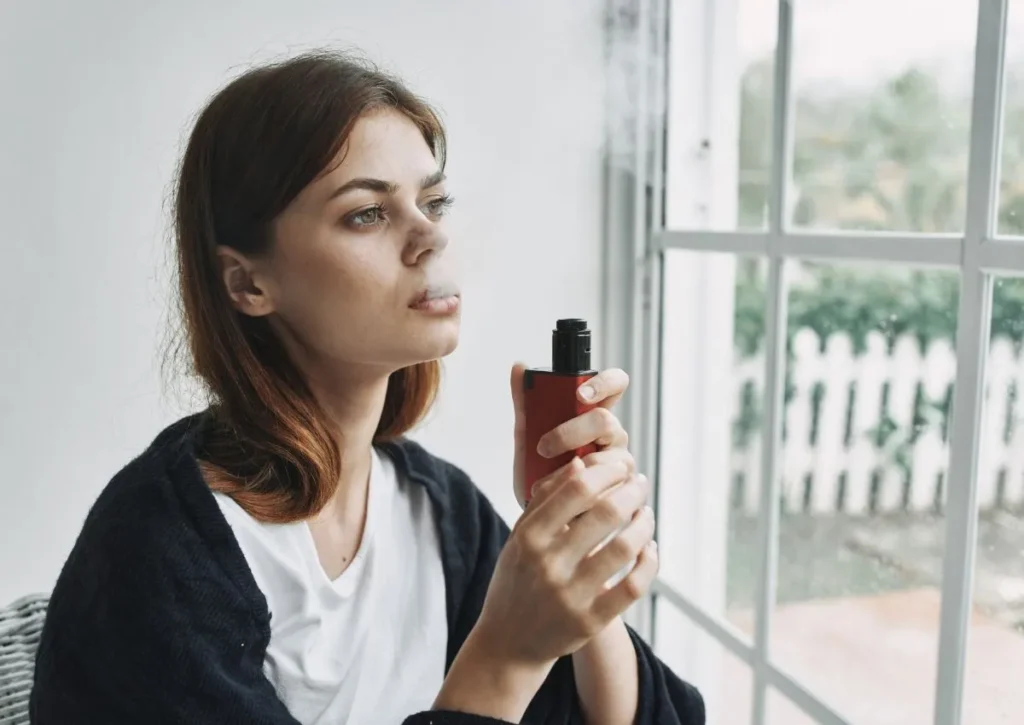Breaking Free: How to Quit Vaping and Protect Your Health
Dec 12, 2024
Vaping, once seen as a safer alternative to smoking, has become a widespread habit, with around 6% of U.S. adults using e-cigarettes in 2022. While it’s less harmful than smoking, vaping isn’t without risks. For those who started vaping to quit smoking, the ultimate goal should be to quit vaping too, as the healthiest choice is neither smoking nor vaping.
The rise in vaping among young people is particularly concerning, with over 2.55 million middle and high school students using e-cigarettes in 2022. Flavored e-cigarettes, favored by nearly 85% of adolescents, have played a significant role in this trend. Despite a recent decline in youth vaping, quitting remains a challenge for many.
Transitioning away from vaping requires a strategic approach. Gradually reducing nicotine levels and extending the time between vaping sessions can make the process more manageable. With the right plan and support, quitting vaping is an achievable goal.

Why Vaping Is Not a Harmless Habit
Think of vaping like eating candy that looks yummy but isn’t good for you. The nicotine in vapes can trick your brain into wanting more and more, kind of like when you can’t stop playing your favorite video game. The vapor might look cool, but it has chemicals that can make you sick. Some people who vaped got such bad coughs that doctors couldn’t figure out what was wrong at first!
The Hidden Dangers of Vaping
Let’s get straight to the point—vaping isn’t as harmless as it seems. While it’s often marketed as a safer alternative to smoking, the truth is far more complicated. With sleek devices and enticing flavors, vaping can lure people in, but beneath the surface lies a significant risk: nicotine addiction. Nicotine dependence can develop quickly, particularly in young people.
But nicotine isn’t the only concern. The vaping aerosol contains harmful chemicals, not just harmless vapor. Studies, including those from the CDC, have linked vaping to serious lung illnesses. It’s clear that vaping isn’t the “free pass” many believe it to be.

And what about the long-term effects? That’s where things get even murkier. While vaping avoids some of the dangers of traditional smoking—like tar and carbon monoxide—the full picture of its long-term impact is still unknown. We simply don’t have enough data yet to fully understand how it may affect health over the years. Could it lead to unexpected health issues in the future? It’s a very real possibility.
In the end, it’s about making informed choices. Quitting vaping isn’t about following trends; it’s about prioritizing your health and well-being. Future you might thank you for taking a step back now, shifting your focus not just away from vaping, but towards a more holistic approach to wellness. After all, true health is about making thoughtful, deliberate choices today that will benefit you in the long run.
Components of Vaping Addiction
Vaping addiction is a complex and multifaceted issue, extending beyond mere habit. It involves physical, mental, and social elements, all of which contribute to a deep-rooted dependence.
Physical Dependence
Nicotine is the primary driver of physical addiction. It interacts with the brain’s reward system, creating intense cravings that are difficult to ignore. E-cigarettes deliver nicotine through vapor, often resulting in rapid addiction. Quitting becomes challenging as withdrawal symptoms, such as irritability and anxiety, make the process even more difficult. In many ways, it’s similar to the dependence on caffeine, but nicotine’s grip is significantly stronger and more difficult to break.
Mental Dependence
Vaping often becomes an emotional crutch, used to cope with stress, boredom, or anxiety. Users may turn to their devices during social events or even when feeling restless. Over time, vaping becomes less about satisfying a physical craving and more about addressing emotional needs or filling gaps in daily routines. This mental dependency reinforces the habit, making it harder to quit.

Social Dependence
The social aspect of vaping plays a powerful role in sustaining the addiction. Vaping is often intertwined with social activities, creating peer pressure that can make it difficult to step away. The behavior becomes part of a group dynamic, and individuals may feel the pressure to conform, fearing exclusion if they choose to quit. The communal nature of vaping adds an additional layer to the addiction, making it more than just an individual struggle.
Each of these components—physical, mental, and social—works together to create a dependence that is challenging to overcome. However, recognizing these aspects is a crucial step toward breaking free from the cycle of addiction.
Effective Strategies to Quit Vaping
Quitting vaping is a journey worth taking. Yet, knowing where to start can be difficult. Setting a quit plan helps. Picking a specific date boosts accountability; timing is key, so maybe not during finals or holidays.
What about triggers? They lurk in familiar places, times, or activities. Recognize them, and you can dodge or face them with confidence. The 4 Ds—Delay, Deep breathing, Do something else, and Drink water—can help fight off the triggers.
Nicotine Replacement Therapy (NRT) such as patches, gum, or lozenges are there for when cravings become difficult to ignore. When combined with prescription medications, NRT attacks withdrawal symptoms with precision.
Removing all vapes from your environment is crucial. Asking others not to vape nearby reduces temptation.
Relapse: How to Stay on Track After a Slip-Up

After deciding to quit vaping, the journey can be bumpy, but that’s okay relapse happens. When it does, it doesn’t mean failure, more like a detour. So, what’s next? Get back on track quickly. Consider the slip-up a learning experience. Reflect on what triggered the relapse. Was it stress, social pressure, or maybe a specific place or event? Knowing the “why” helps in designing better-coping strategies.
Think about setting newer, perhaps smaller, goals. Instead of focusing on “forever,” consider “today.” Can you go just this one day without vaping? Baby steps count. Small victories build confidence. Engaging in alternative activities might help too. Imagine picking up an old hobby or trying something new. Both can divert the mind from cravings.
Benefits of a Vape-Free Life
Kicking the vaping habit has many benefits, not just physically—though, let’s be honest, your body feels it first. Breathing in clean air sparks an energy boost. Plus, wave goodbye to those annoying coughing fits.
But wait, there’s more! Wallets smile, too, when vaping products are off the shopping list. No more emptying pockets for the latest e-liquid flavors. It adds up—those purchases stack up faster than you think.
And let’s not forget the freedom. Ex-smokers talk about kicking smoking as liberating—it’s true here, too. Free from the grip of nicotine cravings, social events without sneaking away to hit the vape start to sound like fun again. Relationships grow too. They suffer less strain without the constant buzz of just ‘getting a quick fix.’
Mentally, clarity sharpens. The fog lifts when nicotine releases its hold on the brain. Mood swings? They flatten out. Without the roller coaster of withdrawal dictating your day, stability feels refreshing.

Getting Help: Resources to Quit Vaping
You don’t have to quit vaping alone! Right here in Wichita, HealthCore Clinic has caring people who know exactly how to help you stop vaping. We understand what you’re going through and have helped many others just like you.
Ready to take the first step? Call HealthCore Clinic today at (316) 691-0249. Our friendly team will:
- Listen to your story without judging
- Create a plan that works for you
- Support you every step of the way
- Help you stay vape-free
Don’t wait to start feeling better! Schedule an appointment at HealthCore Clinic in Wichita. We’re here to help you quit vaping and start living your healthiest life.